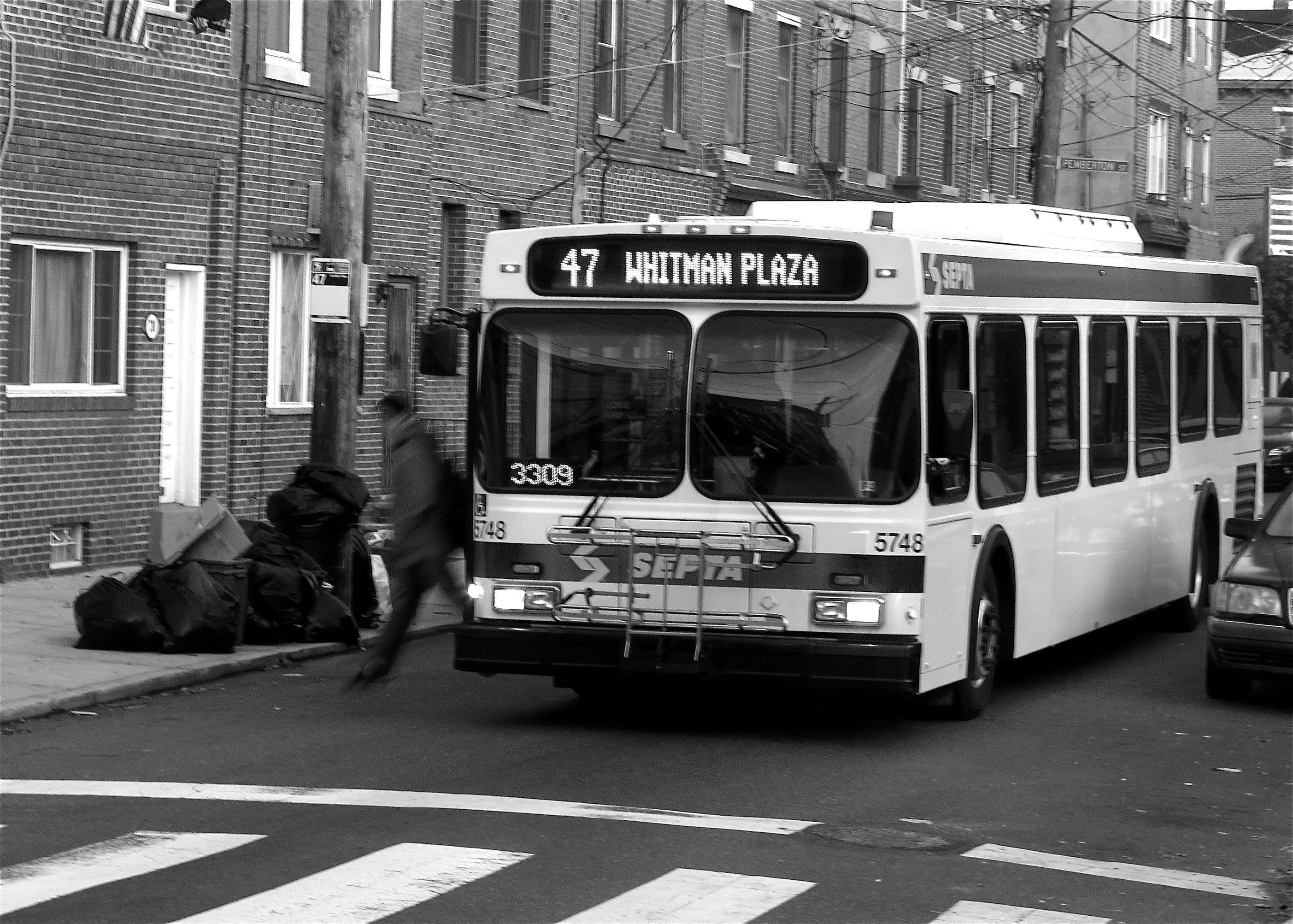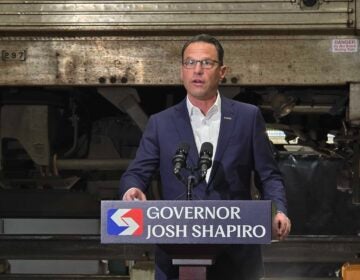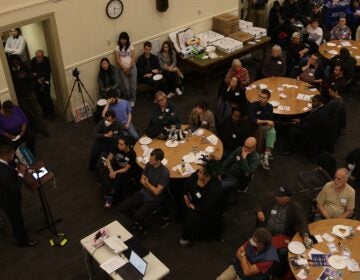SEPTA bus and trolley ridership down, even before city transit strike

Like so many others, SEPTA had a rough 2016.
Fiscal Year 2016, that is, which ended June 30th—before the Silverliner V crisis sidelined a third of its Regional Rail fleet and the transit strike shut down city services for six days. SEPTA lost hope for a better new year months ago.
Even without those reasonable explanations for fewer passengers, SEPTA ridership decline by four million rides, or about two percent less than FY 2015.
Most of that loss came from the city’s buses, where ridership fell 3.1 million, or two percent, to 155.4 million in FY 2016. Trolley ridership also took a big hit, carrying 1.38 million fewer customers — a drop of nearly five percent (including the suburban Routes 101 and 102, ridership was down 914,000 across just the city trolleys).
There is no single reason why Philadelphians shunned buses and trolleys last year, and it’s too early to tell if this was a one time blip or the start of a long-term dip, said Greg Krykewycz, associate director of transportation at the Delaware Valley Regional Planning Commission.* And whatever the causes are, they’re not just affecting SEPTA: local bus ridership is down nationally.
According to American Public Transportation Association (APTA) data, bus ridership was down 3.1 percent over the first half of 2016 compared to the first half of 2015. At the same time, commuter rail and subway ridership showed small increases nationally and remained relatively stable for SEPTA.
Compared to other public transit options, buses are used more for short trips—the kind of trips that ride-hailing companies like Uber and Lyft tend to make, said Krykewycz. Instead of taking a bus a mile or two, riders might hail a ride through a transportation network company (TNC).
Both Uber and Lyft declined to provide ridership data, but it’s safe to say that these services grew significantly over this same period. Both companies have reported significant growth nationally: Lyft told the Wall Street Journal that it logged 52.6 million trips in the last quarter of 2016, up from 21.1 million a year before, while Uber said it had 78 million rides in December, up from 62 million in July. For Uber, that’s more than double what it reported in December 2014.
Uber came to Philadelphia in the fall of 2014, and Lyft the following February. Since then, taxi ridership has dropped precipitously. Similarly, some Philadelphians may be opting to e-hail a ride instead of waiting for the bus for a shorter trip. It can even be cheaper for a group of passengers: a $5-6 Uber ride for three is comparable to $5.60 in tokens and cheaper than $6.75 in single trip fares.
In the short run, that’s a clear win for riders, but it might not last: As Naked Capitalism has shown, Uber effectively subsidizes its trips with investor capital, keeping prices artificially low in a bid to drive up market share. Eventually, prices will rise. It’s the Standard Oil business model.
Spokesmen for both Uber and Lyft argued that ride-hailing services are supplements to, not substitutes for, transit. “1-in-6 Lyft rides in the Philly region started or ended near transit in December, and we’ve seen a 35% increase in these types of trips in the past 6 months,” Lyft’s spokesman wrote PlanPhilly. Uber pointed to an APTA survey that said that people who use “share modes” like bike-share, car-share or ride-hailing are more likely to use public transit, and emphasized its discount program with SEPTA around some Regional Rail stations.
But SEPTA agrees with Krykewycz: The rise of ride-sharing may be hurting ridership figures.
“Our ridership may be more sensitive than it used to be,” said Erik Johanson, director of innovation at SEPTA. “You have Uber, Lyft, [Indego] bike share: You have competitive alternatives out there, so people have options when it comes to their discretionary travel.”
SEPTA still has data to crunch to confirm its suspicions about some discretionary riders switching to TNCs. As Krykewycz put it: “This is all educated speculation.”
But SEPTA’s preliminary analysis suggests it’s the occasional riders, not regular commuters, who are leaving their tokens at home. “It doesn’t appear that we’re losing ridership at peak [hours],” said SEPTA Deputy General Manager Rich Burnfield. SEPTA hasn’t seen much of a drop in its monthly and weekly pass usage, but token and cash fares have dropped off, suggesting it’s the occasional riders who are staying away.
Johanson pointed to another clue to the diminishing ridership mystery: customer complaints about overcrowded buses haven’t dropped, suggesting that the rush hour rides remain packed to the gunnels with regular commuters.
After the evening rush hour, bus frequencies drop off sharply, often down to just two per hour. Taking a night bus means waiting in the dark and almost always outside. Same goes for trolleys outside of the Center City tunnels. “So rather than going out and waiting 30 minutes for the next bus, you have Uber come pick you up,” said Burnfield.
The subway lines, which have been steady, maintain relatively short headways during off-peak hours and provide shelter from the weather. Burnfield also noted that bus ridership declines during winter.
SEPTA says it’s still exploring the problem, so no changes are coming just yet. In December, the authority brought in noted transit consultant Jarrett Walker to lead three days of workshops with senior management looking at possible bus network overhauls. Last year, Walker radically redrew Houston’s bus route map, leading to significant ridership increases (but a smaller area of coverage). SEPTA is a ways away from proposing any major service changes, said Burnfield, and likely wouldn’t take such dramatic steps when the time comes.
Beyond the rise of TNCs, Burnfield noted that FY 2016 included the papal visit and a large snowstorm, both of which disrupted services significantly. Krykewycz pointed out that gas prices remained relatively low over that period, which makes driving more affordable. At the same time, the economy improved, which tends to encourage more driving as well. Most likely, all those factors are driving down ridership at the margins. “It’s not a death by a thousand cuts, so much as a cut by a thousand paper cuts,” said Krykewycz.
And it may be that the drop-off is just a one-time dip. “Until you see the trends over time, it’s hard to say what’s the blip and what’s the pattern,” said Krykewycz.
Unfortunately for SEPTA, it’s unlikely that ridership numbers will rebound in FY 2017. The authority started fiscal year 2017 with the Silverliner V fiasco, driving year-to-date rail ridership down 1.36 million, or 8.6 percent. Ridership numbers for city transit were improving — until the six-day strike. Compared to last November, ridership on the city’s buses, trolleys and subways was down 7.18 million, or 27 percent; year-to-date the drop is 3.87 million, or 3.6 percent.
All of that is hitting SEPTA’s wallet hard: passenger revenues are down 11 percent so far in FY 2017. “At the end of November, we had a deficit of around $17 million,” said Burnfield. In response, SEPTA has tightened its belt, instituting a hiring freeze of all non-essential employees, a travel ban, and cutting back on overtime.
Burnfield hopes the cost cutting, plus a mild winter, will help SEPTA its way back to a balanced budget by the fiscal year’s end on June 30th. Even if it can’t, SEPTA won’t have to go begging in Harrisburg for more money, though. The authority has a service stabilization fund of around $80 million. That rainy day money will be welcome shelter from this tempestuous year for SEPTA.
WHYY is your source for fact-based, in-depth journalism and information. As a nonprofit organization, we rely on financial support from readers like you. Please give today.





